Potter’s charming vessels are based on rag rugs
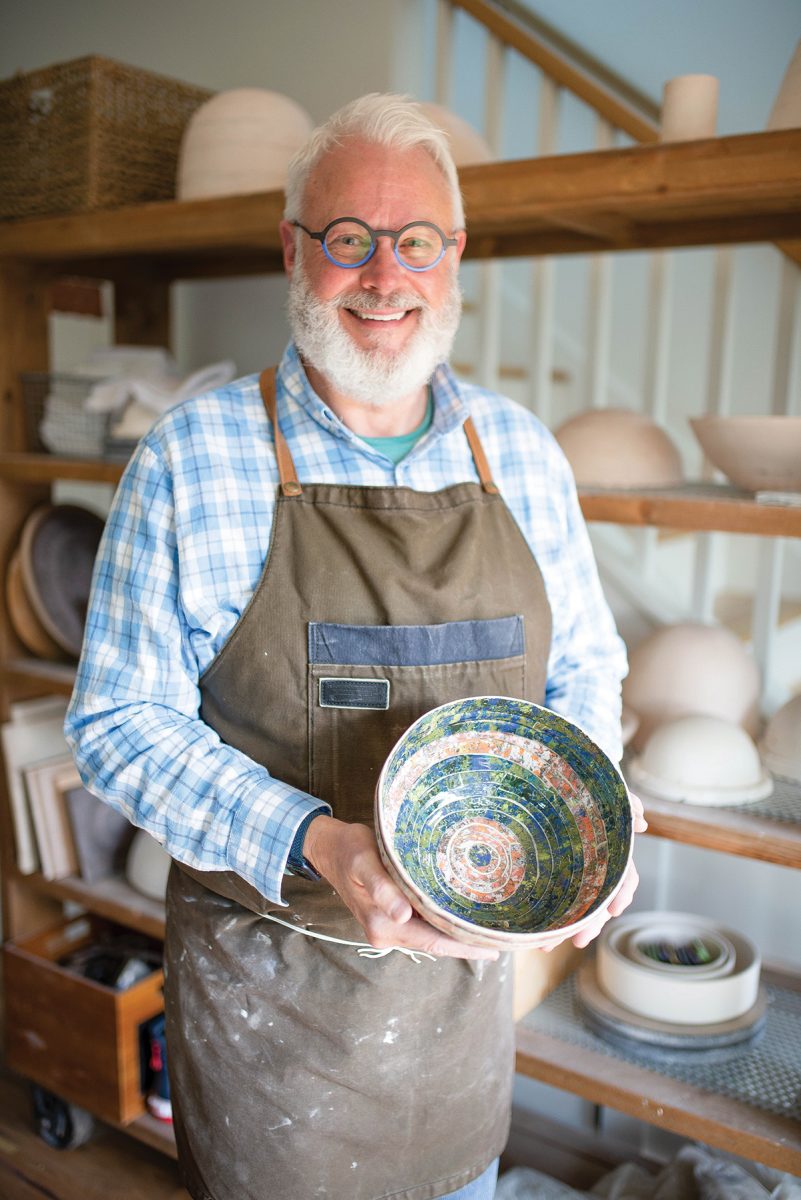
Photo by Pat Barcas
Stephen Biggerstaff is not a person wary of getting his hands dirty. In fact, he built a successful career doing just that as a landscape designer in Kiawah Island, South Carolina, about 45 minutes south of Charleston and a stone’s throw over the Kiawah River from Johns Island, where he grew up.
His college studies of botany and horticulture led to his profession, but way before that, “I grew up digging in that pluffy mud along the river,” he relates. “We played in it and made clay bricks. I loved to have my hands in mud and dirt.”
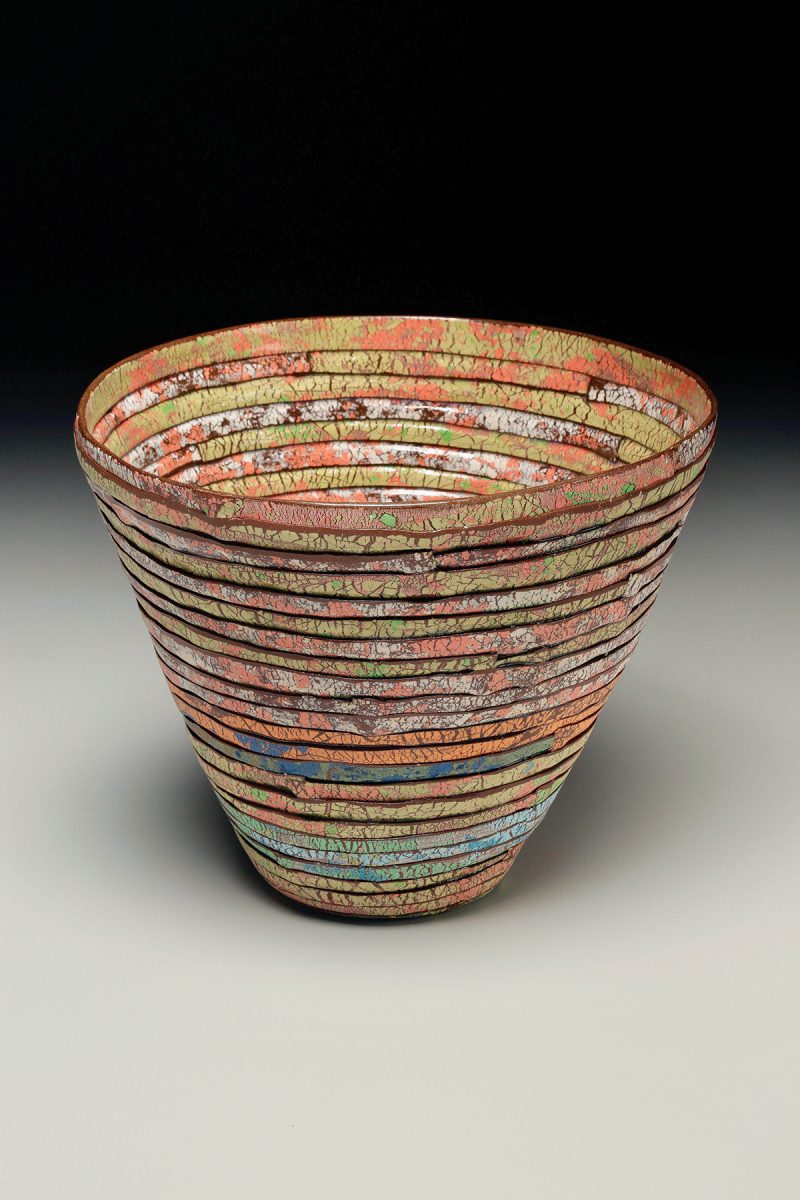
He began exploring that interest as an adult, with his first experience on the wheel in night classes he took in Charleston’s Cone 10 Studios.
When he sold his landscape design and construction business over a decade ago to embrace early retirement, he was ready for a change of scenery, but not one too far from Charleston. Familiar with Western North Carolina from family camping trips in the area and seeking a small town that had the cultural amenities of a larger city, he arrived in Asheville in 2009 and immediately began taking classes at Odyssey ClayWorks, and then at Penland School of Craft near Burnsville.
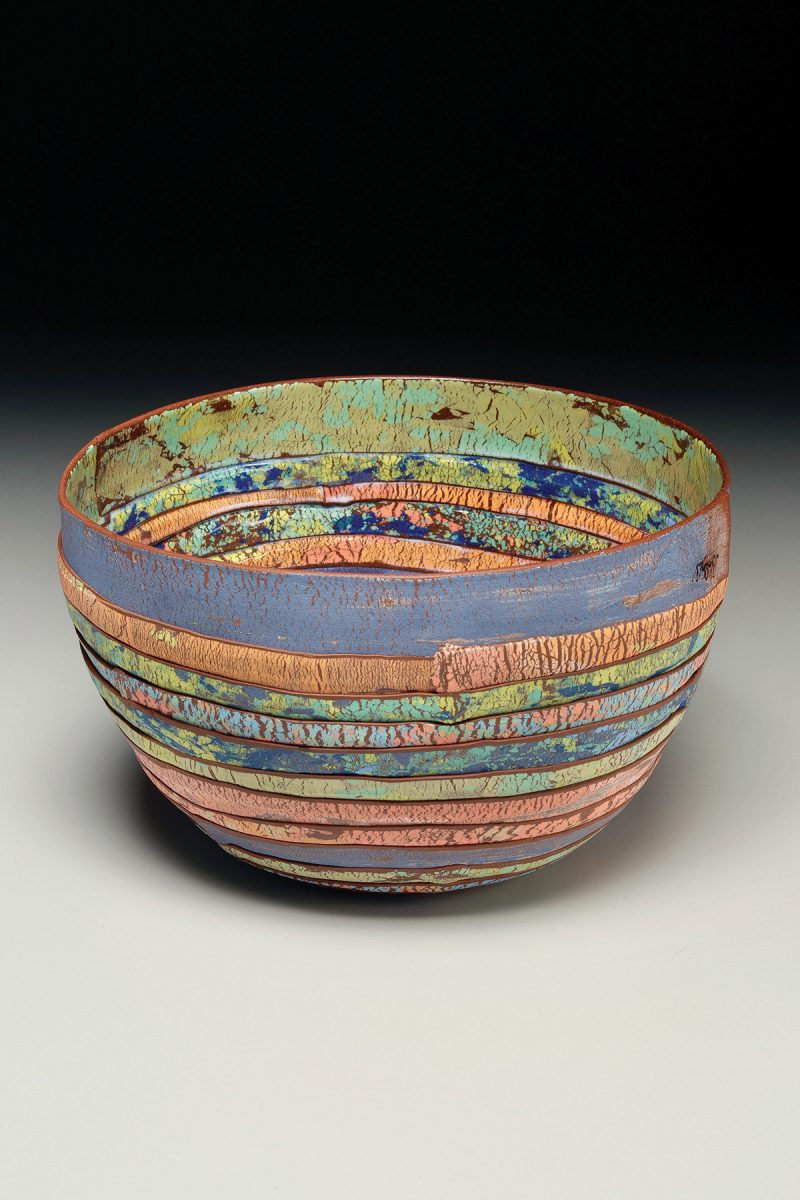
“In the beginning I was doing the regular things most people explore, all kinds of forms, but it didn’t stick,” he admits. “I didn’t have an affection for glaze work.”
What did attract him was a technique an instructor used, staining her porcelain different colors and manipulating a slab of clay using those colors. “I thought I could build that color in on the front end and not worry about choosing glazes. I could design the palette the way I wanted and not have to wait to see how it came out.”
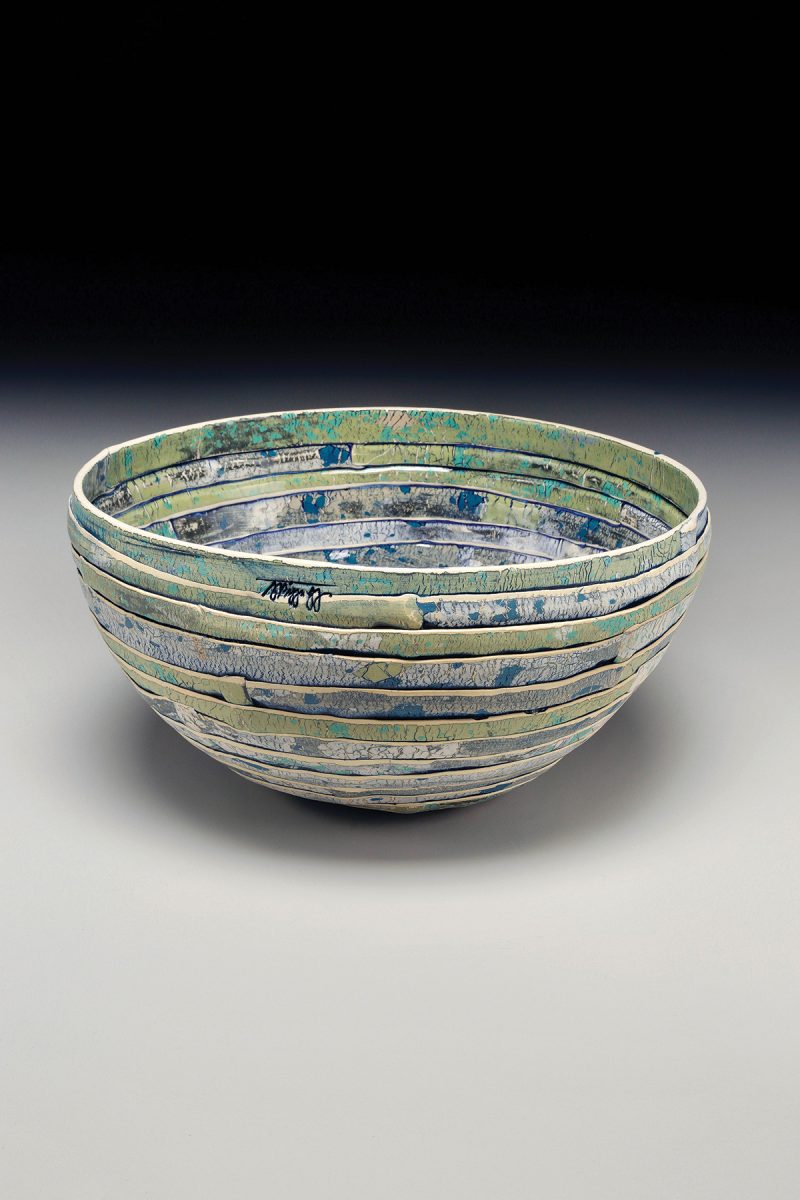
It was similar, in fact, to designing a landscape and knowing, from what is planted, which colors will emerge and when.
A love for bowls and the colorful homespun rag rugs on the floors of the Asheville home he shares with his husband led Biggerstaff to developing the multiple steps it takes to get the distinct look and feel of what he calls “rag rug bowls.”

Photo by Pat Barcas
“At first I was layering porcelain slips colored with natural oxides or Mason Stains on slabs, then rolling them out to basically make a piece of fabric, but I didn’t quite know what to do with that,” he explains. “One day I started cutting the slabs into strips like ribbons and using the technique of pinching to build with the clay. That’s how the bowls were born.”
Biggerstaff now uses molds he makes himself to build the bowls in his backyard studio. Working from home, he says, “is great. I can walk over there in my pajamas if I want to.”
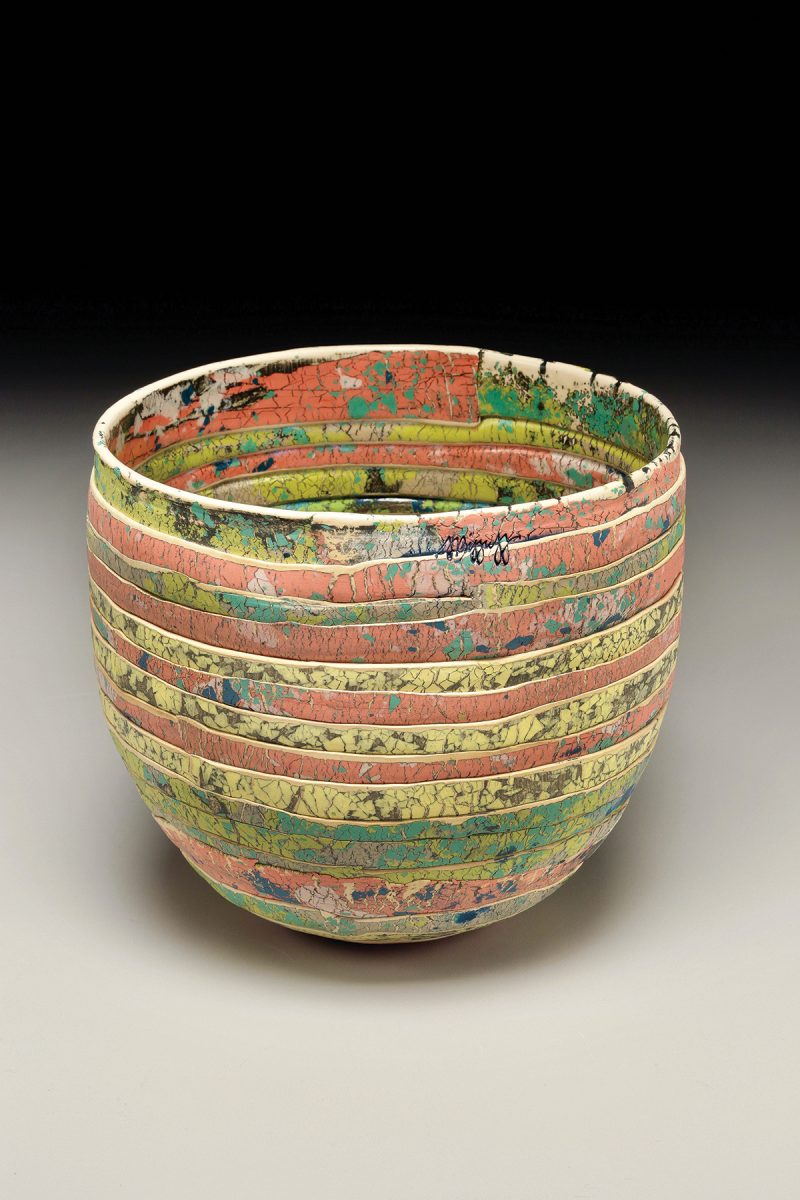
Biggerstaff’s hospitality-size vessels show folk-art influences from his Southern heritage.
Most of his bowls come in three sizes and are so named. The smallest individual vessels are called “Mine or Yours” and the medium-sized bowl is the “Ours.”
The biggest bowl represents quintessential Southern hospitality. “It’s the ‘All Y’all’ bowl,” he says with a laugh. “Big enough to serve all y’all.”
Stephen Biggerstaff, Asheville. Biggerstaff’s work is represented locally at Odyssey Co-op Gallery, 238 Clingman Ave. in the River Arts District, 828-505-8707, odysseycoopgallery.com. The artist is on Instagram @stepbigg_clay
